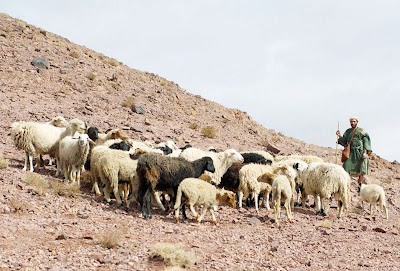Gospel:
Jesus said: “My sheep hear my voice; I know them, and they follow me. I give them eternal life, and they shall never perish. No one can take them out of my hand. My Father, who has given them to me, is greater than all, and no one can take them out of the Father’s hand. The Father and I are one.”
Gospel Trivia:
The key to understanding this message is to determine who were listening to Jesus: NOT his disciples, but the Jews who were against him.
Thus, when Jesus says, "my sheep hear my voice," he is actually saying the Jews who were against him were not his sheep; that they will not have eternal life, and that they will perish.
The "knowing" that Jesus describes is more than knowing one's physical attributes or characteristics, but more about one's character and deep motivations -- like when we say "I really know that person." Or when we say, "I thought I knew him" -- when someone does something completely out of character.
Secondly, note that Jesus presents eternal life as a gift; there is no other requirement but to believe in Jesus. This is opposite the ways of the Jews who believed that God's pleasure can be earned by following their stringent laws and rules.
Thirdly, Jesus claims unity with the Father. This does not mean just a unity in will and purpose, but a unity equivalent to the divine nature of God. Thus, in the verse right after the last of this Sunday's gospel), the Jews were angered by this phrase and wanted to stone him for blasphemy.
We are chosen not because we love God, but because God loves us first and chose us. This is why Jesus is the good shepherd -- he chooses us though we are undeserving.
Reference:
- Nil Guillemette, SJ, Hungry No More (Makati: St. Paul's Publications, 1989), pp. 146-148.
- Nil Guillemette, SJ, Hungry No More (Makati: St. Paul's Publications, 1989), pp. 146-148.


